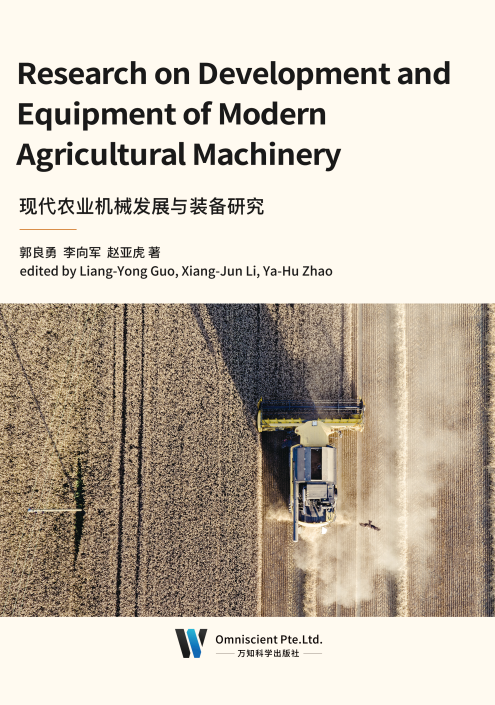
The rapid development of information technology has greatly promoted the management level of agricultural machinery. We have accelerated the pace of agricultural modernization and realize the optimization and upgrading of agricultural industry rapidly. The role of information technology in modern agricultural machinery management is increasingly prominent. It is of great practical significance to strengthen the application of electronic information technology in agricultural machinery.
For the construction of modern agricultural society , It is of great strategic significance to accelerate agricultural mechanization. Especially after the 18th CPC National Congress , the strategic position of “agriculture, rural areas and farmer” has become the core development outline of the urban-rural integration of the four modernizations. This environment also puts forward higher requirements for the modernization of China’s agricultural mechanization. At the same time, it has become an important weapon to achieve the goal of advanced agricultural mechanization.
Modern agriculture is based on the material technology of agricultural mechanization. The level of agricultural mechanization is an important symbol of the level of national agricultural industrialization and modernization. Agricultural mechanization, as the key carrier of effective implementation and promotion of agricultural biological high-tech research results, plays an important role in improving the comprehensive production capacity of grain, ensuring national food security, promoting the adjustment of agricultural industrial structure, speeding up the transfer of agricultural labor force, gradually developing agricultural scale operation, developing rural economy, increasing farmers’ income, speeding up the process of modern agricultural construction, and improving the market competitiveness of agricultural products.
前 言
信息技术的突飞猛进极大地带动了农业机械管理水平, 加快了农业现代化步伐,快速实现了农业产业的优化和升级。信息技术在现代农业机械管理中的作用日益凸显,加强对电子信息技术在农业机械中的应用研究具有重要的现实意义。
对于建设现代化农业社会而言,加快推进农业机械化具有着重要的战略意义。特别是在党的“十八大”召开以后,“三农”工作的战略地位已经成为了四化同步的城乡一体化的核心发展纲要,这种环境下也为中国的农业机械化的现代化发展提出了更高要求,同时也成为了实现先进的农业机械化目标的重要武器。
现代农业是以农业机械化为物质技术基础的农业。农业机械化水平的高低,是国家农业工业化和现代化水平的重要标志。农业机械化作为农业生物高新技术研究成果得以有效实施和推广的关键载体,对于提高粮食综合生产能力,保障国家粮食安全,促进农业产业结构调整,加快农业劳动力的转移,逐步发展农业规模经营,发展农村经济,增加农民收入,加快现代农业建设进程,提高农产品市场竞争力都具有重要的作用。
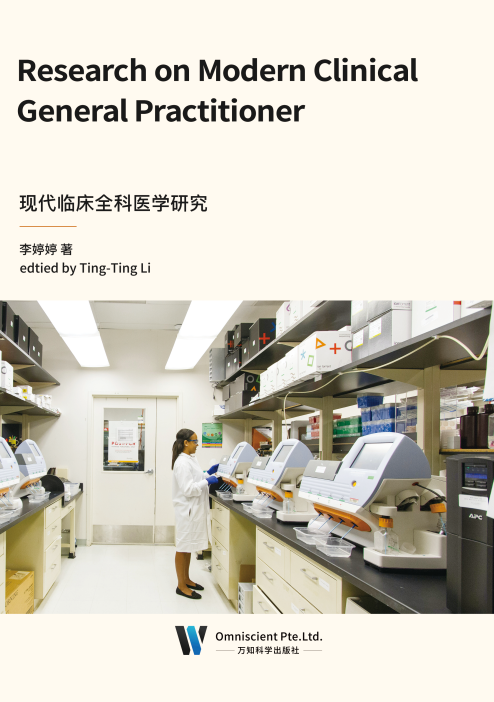
With the continuous improvement of medical science and technology, great progress has been made in basic theoretical research and clinical diagnosis and treatment. New theories, new technologies and new methods are constantly emerging. In order to facilitate the majority of clinicians systematically and comprehensively understand the clinical common diseases, multiple diseases diagnosis and treatment methods in a short time, this book is a new theory and technology in the field of medicine, covering all aspects of general medicine. The content system is comprehensive, the structure is clear, the language is concise, and the scientific and practical are integrated, the structure is smooth and reasonable, and the contents of each part are relatively independent, which have the function of connecting the past and the future, making the content smooth, effectively connected. The content is more but not disorder, the description is novel, flexible and diverse, and it is easier to master knowledge points.
前 言
随着医学科技水平的不断提高,基础理论研究、临床诊断和治疗均取得了巨大的进展,新理论、新技术、新方法不断涌现。为便于广大临床医师在较短时间内,系统、全面地了解掌握临床常见病、多发病的诊断及治疗方法,本书医学领域的全新理论与技术,涵盖全科医学领域的各方面的知识点。内容系统全面,条理清晰,语言简洁,融科学性和实用性为一体;结构顺畅合理,各部分内容相对独立成章的基础上,兼具了承前启后的作用,使内容流畅,有效衔接,内容多而不乱;叙述新颖,灵活多样,更易于知识点的掌握。
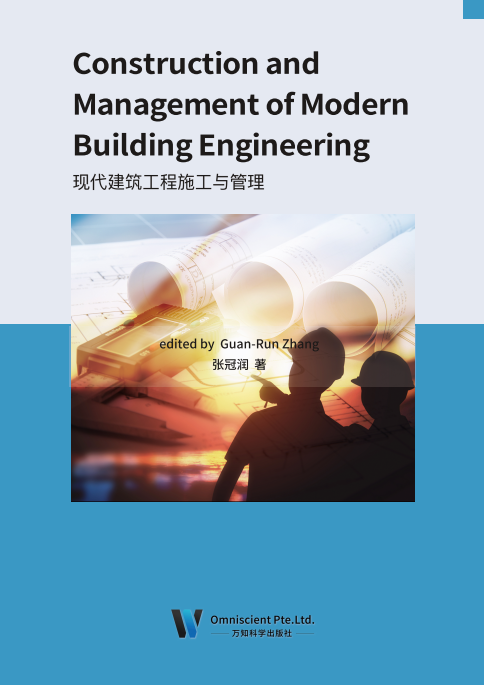
With the rapid development of China’s modernization, the gradual establishment and improvement of the market economic system, and the deepening of the reform of the construction management system, the engineering construction needs more and more professional talents with wide caliber and thick foundation.
The book introduces the construction technology, network planning technology, construction organization design and general design of construction organization. Through learning, be familiar with the concept and steps of capital construction, the characteristics of construction engineering, the basic principles, methods and steps of construction
technology and network planning technology, master the content, methods and steps of unit project construction organization design, and master the compilation method of construction organization design of general civil buildings, high-rise buildings, single-layer industrial plants and highway projects. The content reflects adaptability and applicability.
前 言
随着我国现代化建设事业的飞速发展,市场经济体制的逐步建立与完善,以及建设管理体制改革的不断深化,工程建设越来越需要宽口径、厚基础的专业人才。
书中介绍了建筑工程施工技术、网络计划技术、施工组织设计及建筑工程施工组织总设计等内容。通过学习,熟悉基本建设的概念、步骤以及建筑工程施工的特点,施工技术及网络计划技术的基本原理、方法和步骤,掌握单位工程施工组织设计的内容、方法和步骤,同时掌握一般民用建筑、高层建筑、单层工业厂房及公路工程的施工组织设计的编制方法。内容上体现适应性和可应用性。
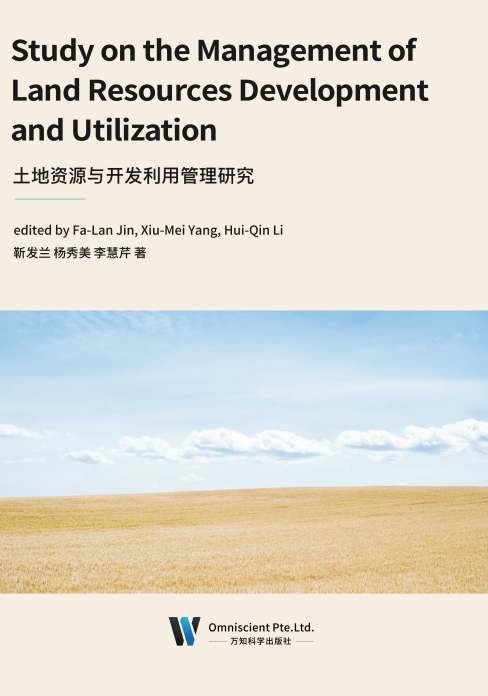
Land resource management refers to the planning, organization, command, coordination and supervision of land development, utilization, management and protection in order to achieve the strategic goal of the sustainable development of national economy and society. Land is the most basic material basis for people's survival. The rational use and optimal allocation of land resources is an important issue to determine whether a region can develop sustainably, healthily and rapidly. It has important practical and guiding significance for the realization of the strategic goal of sustainable development and the effective improvement of the efficiency of land resources utilization.
The rational use and optimal allocation of land resources is an important issue to determine whether a region can develop sustainably, healthily and rapidly. It has important practical and guiding significance for the realization of the strategic goal of sustainable development and the effective improvement of the efficiency of land resources utilization. In order to promote the virtuous circle of society, economy and ecosystem, we should take ecological stability, construction and development as the central task, resolutely implement the construction strategy of protection, consolidation and development, strengthen the water conservation, strengthen the scientific research of ecological environment protection, the popularization and application of new technologies and the scientific and technological support capacity of ecological environment protection. We should also control the land desertification caused by human factors, focus on controlling people’s irrational use of resources and follow the unified planning and unified layout in order to achieve the overall construction and coordinated development and promote the sustainable development of economy and society with the help of sustainable use of land resources. In addition, we should transform our goal from the maximization of economic benefits to the maximization of social, economic and ecological comprehensive benefits. The maximization of comprehensive benefits of oasis land resources is the guarantee of maintaining sustainable economic development, improving people's living quality and regional ecological environment stability.
前 言
土地资源管理是指为实现国家经济、社会可持续发展的战略目标,对土地的开发利用、治理、保护等进行计划、组织、指挥、协调和监督等活动的总称。土地是人们赖以生存的最基本的物质基础,土地资源的合理利用和优化配置是决定一个地区能否持续、健康、快速发展的重要问题,对实现可持续发展的战略目标,切实提高土地资源利用效益具有重要的现实和指导意义。
土地资源的合理利用和优化配置是决定一个地区能否持续、健康、快速发展的重要问题,对实现可持续发展的战略目标,切实提高土地资源利用效益具有重要的现实和指导意义。为了促使社会、经济、生态系统的良性循环,将生态稳定、建设和发展作为中心任务,坚决实施保护、巩固、发展的建设策略,加强水士保持,加强生态环境保护的科学研究和新技术的推广应用以及生态环境保护的科技支持能力。控制人为因素所产生的土地荒漠化,重点控制人类不合理利用资源的行为,统一规划、统一布局、统筹建设、协调发展,以土地资源可持续利用促进经济社会的可持续发展,从经济效益最大化转变为社会、经济、生态综合效益最大化。绿洲土地资源的综台效益最大化是维系经济的可持续发展和提高人民生活质量及区域生态环境稳定性的保证。
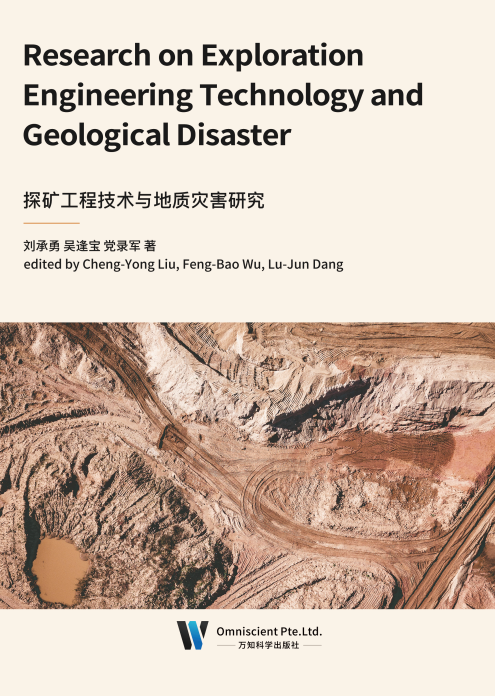
The main content of mineral resources exploration is prospecting. Prospecting refers to the working process of using remote sensing technology, geology, geochemistry, geophysics and other methods to search for ore deposits according to the metallogenic theory and known metallogenic law of ore deposits and the geological conditions of the working area. According to the principle of gradual progress, mineral resources exploration can be divided into four stages: pre survey, general survey, detailed survey and exploration. Its tasks are to make prospective evaluation of regional mineral resources, submit deep exposure point, submit exploration point and submit deposit. The work of each stage of mineral exploration should be guided by the analysis and study of the regional metallogenic geological conditions, and the comprehensive prospecting method should be adopted according to the regional geological characteristics and local conditions, so as to achieve the goal more scientifically and economically.
The basis of mineral exploration can also be called the prospecting basis or the criterion of prospecting, which refers to the geological basis for the formation and distribution of the deposits in a certain area. According to the basis of mineral exploration, we can distinguish the prospecting direction, predict the possible deposit types and favorable metallogenic areas under certain geological conditions, and reasonably select and use the prospecting methods. Therefore, the basis of mineral exploration is of great significance to improve the prospecting effect.
The major of geological engineering includes two major directions: traditional engineering geology and prospecting engineering, which is indispensable for the national economic construction in China. With the development of human society and technological progress, its status is becoming more and more important, and its application field is also increasingly extensive. Geological engineering specialty is not only for the traditional geological prospecting service, but also widely used in the fields of industrial and civil buildings, major infrastructure construction, geological disaster prevention and control, and is closely related to people's production and life.
前 言
矿产资源勘查的主要内容是找矿,找矿是指运用矿床成矿理论及已知成矿规律,根据工作地区地质条件,采用遥感技术与地质学、地球化学、地球物理学等方法寻找矿床的工作过程。矿产资源勘查按照循序渐进、逐步深入的原则划分为:预查、普查、详查和勘探 4 个阶段。其任务分别是对区域矿产资源作出远景评价、提交深部揭露点、提交勘探点和提交矿床。矿产勘查各阶段的工作,都应以该区域成矿地质条件的分析研究为指导,根据区内地质特征因地制宜采用综合找矿方法,才能更科学、更经济地达到目的。
矿产勘查依据亦可称找矿依据或找矿判据,是指在某一地区内矿床形成和分布的地质依据。根据矿产勘查依据,可以判别找矿方向,预测在一定的地质条件下可能存在的矿床类型和成矿有利地区,可以合理地选择和运用找矿方法。所以,矿产勘查依据对提高找矿效果具有非常重要的意义。
地质工程专业包括传统的工程地质与探矿工程两个专业方向,它是我国国民经济建设不可缺少的专业。随着人类社会的发展和技术进步,其地位愈加重要,应用领域也日益广泛。地质工程专业除了为传统的地质找矿服务外,当前还广泛应用于工业与民用建筑、重大基础设施建设、地质灾害防治等领域,与人们的生产和生活密切相关。